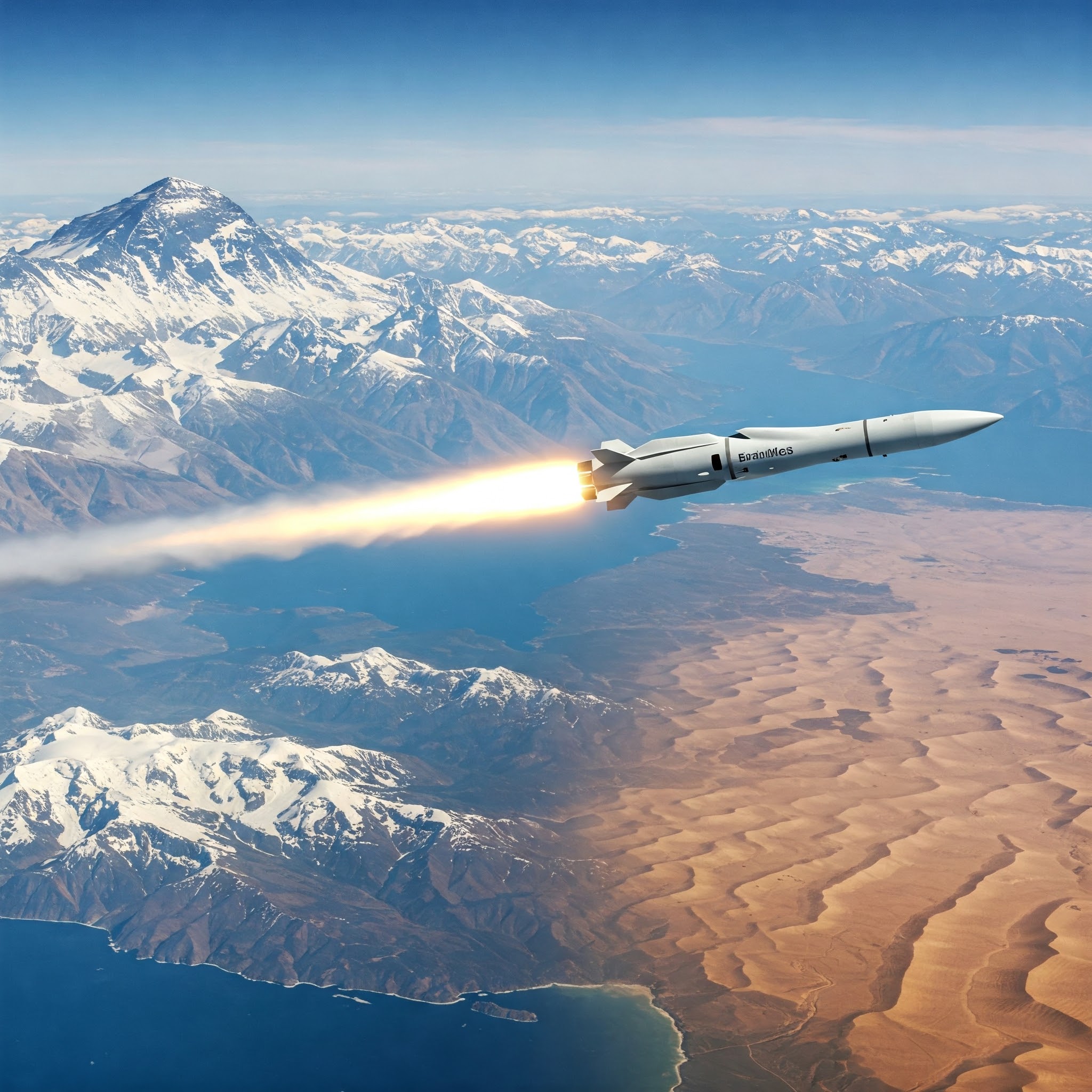In the modern age of technological warfare, few weapons have garnered as much attention and strategic value as the BrahMos supersonic cruise missile. Jointly developed by India and Russia, the BrahMos stands out as one of the fastest and most versatile missiles in the world. From enhancing India’s deterrence capability to securing regional dominance, the missile has become a symbol of indigenous innovation and strategic partnership. This article explores the origins, technological prowess, deployment strategy, and future prospects of the BrahMos missile, offering insights into why it is considered a cornerstone of India’s defense preparedness.
The Origins of BrahMos
India-Russia Strategic Collaboration
The BrahMos missile is the product of a joint venture between India’s Defence Research and Development Organisation (DRDO) and Russia’s NPO Mashinostroyeniya. The name “BrahMos” is derived from two rivers: the Brahmaputra of India and the Moskva of Russia, symbolizing this powerful bilateral defense cooperation.
Foundation and Goals
Established in 1998, BrahMos Aerospace aimed to create a missile that could fly at supersonic speeds, be launched from multiple platforms, and strike with high precision. The primary objectives were speed, stealth, and accuracy, key features needed for modern combat scenarios.
Technical Specifications

Speed and Range
- Speed: Up to Mach 3 (approx. 3,700 km/h)
- Range: Initially limited to 290 km, now extended up to 450 km with newer variants
- Flight Altitude: From 10 meters (sea-skimming) to 15,000 meters
Propulsion System
The BrahMos missile uses a two-stage propulsion system:
- Solid Propellant Booster for initial acceleration
- Ramjet Engine for sustained supersonic cruise
Navigation and Accuracy
- Guidance: Inertial navigation system (INS) with satellite navigation support
- Accuracy: Circular error probability (CEP) of less than 1 meter
Warhead Capability
- Payload: 200–300 kg
- Warhead Types: Conventional high-explosive or semi-armor piercing
Platform Versatility
Land-Based Launchers
Deployed by the Indian Army, these mobile autonomous launchers allow quick repositioning and can engage targets with minimal preparation time.
Naval Platforms
The Indian Navy has integrated BrahMos on several destroyers and frigates. The missile’s sea-skimming capability makes it extremely difficult to detect and intercept.
Air-Launched Variant
The BrahMos-A variant has been successfully test-fired from the Indian Air Force’s Sukhoi Su-30MKI fighter aircraft, adding an air-dominance feature to its arsenal.
Submarine-Launched Version
Though still under development, the submarine-launched version will provide India with second-strike capabilities, enhancing strategic deterrence.
Strategic Importance
Regional Power Balance
BrahMos enhances India’s ability to respond swiftly and decisively to threats from neighboring countries, particularly China and Pakistan. It acts as a force multiplier, enabling India to maintain a credible deterrence posture.
Deterrence and First-Strike Capability
Given its speed and accuracy, BrahMos could be deployed in both offensive and defensive roles. It enables India to neutralize high-value targets with minimal warning.
Export Potential
Countries like the Philippines, Vietnam, and Indonesia have expressed interest in acquiring BrahMos, boosting India’s image as a defense exporter and aligning with the “Make in India” initiative.
Recent Developments
Production Facility in Lucknow
In May 2025, India inaugurated a dedicated BrahMos production facility in Lucknow. This unit is expected to:
- Produce 100–150 missiles annually
- Create over 1,500 skilled jobs
- Enhance local defense manufacturing under the UP Defence Industrial Corridor
BrahMos NG (Next-Gen)
BrahMos Aerospace is developing a lighter, more compact version called BrahMos-NG:
- Speed: Mach 3.5
- Range: 290–300 km
- Deployment: Will be compatible with a wider range of platforms including Tejas fighter jets and submarines
Hypersonic Variant: BrahMos-II
In collaboration with Russian scientists, work is underway on a hypersonic version, BrahMos-II, which is expected to fly at Mach 7. This will place it among the fastest missiles globally.
Geopolitical Implications
Counter to China’s DF Missiles
China’s DF-21 and DF-26 missiles pose a strategic challenge in the Indo-Pacific. BrahMos serves as a counter-measure, ensuring India maintains strategic parity.
Strengthening India’s Quad Presence
As part of the Quad (India, USA, Japan, Australia), BrahMos enhances India’s strategic relevance and supports joint naval exercises in the Indo-Pacific region.
Real-Life Use Cases and Drills
Test Launches and Demonstrations
- 2022: BrahMos successfully test-fired from Sukhoi-30MKI off the eastern coast
- 2023: Precision strike during a military drill in Rajasthan desert
Border Deployment
Reports suggest deployment near the India-China LAC (Line of Actual Control) and in strategic border zones with Pakistan to ensure quick response capability.
Challenges and Controversies
Cost Concerns
Each BrahMos missile costs approximately $3 million. While effective, the high cost may limit mass deployment.
Export Licensing
Due to the Missile Technology Control Regime (MTCR) guidelines, India was earlier restricted in exporting missiles with over 300 km range. Since joining MTCR in 2016, these restrictions have eased.
The Future of BrahMos
The trajectory of BrahMos is aligned with India’s ambitions of becoming a defense superpower. With upcoming variants and increasing global demand, it is expected to:
- Dominate the cruise missile market
- Offer multi-platform deployment
- Strengthen India’s role in global arms trade
Conclusion
The BrahMos missile is more than just a weapon; it is a testament to India’s defense innovation, international collaboration, and strategic foresight. With continuous upgrades, new variants, and export deals in the pipeline, BrahMos stands poised to redefine global perceptions of Indian military capability. Its contribution to national security, regional stability, and international partnerships cannot be overstated.
In the ever-evolving domain of modern warfare, the BrahMos missile will likely remain a central pillar of India’s military doctrine for decades to come.
FAQs About BrahMos Missile
- What is the BrahMos missile?
A supersonic cruise missile developed jointly by India and Russia, capable of launching from land, sea, and air. - What makes BrahMos unique?
Its speed (Mach 3), precision (1m CEP), and versatility across platforms make it stand out. - What is the range of BrahMos?
Up to 450 km in current versions; export variants limited to 290 km. - What platforms can launch BrahMos?
Ships, submarines (future), land vehicles, and fighter aircraft. - How fast is BrahMos?
Approximately Mach 3 (3,700 km/h). - Is BrahMos nuclear-capable?
Currently, it is equipped with conventional warheads. - Which countries are interested in BrahMos?
Philippines, Vietnam, and several ASEAN countries. - What is BrahMos-NG?
A smaller, lighter next-gen version compatible with more platforms. - What is BrahMos-II?
A hypersonic variant under development, aiming for speeds up to Mach 7. - Where is the new production unit located?
In Lucknow, part of the Uttar Pradesh Defence Industrial Corridor.








+ There are no comments
Add yours